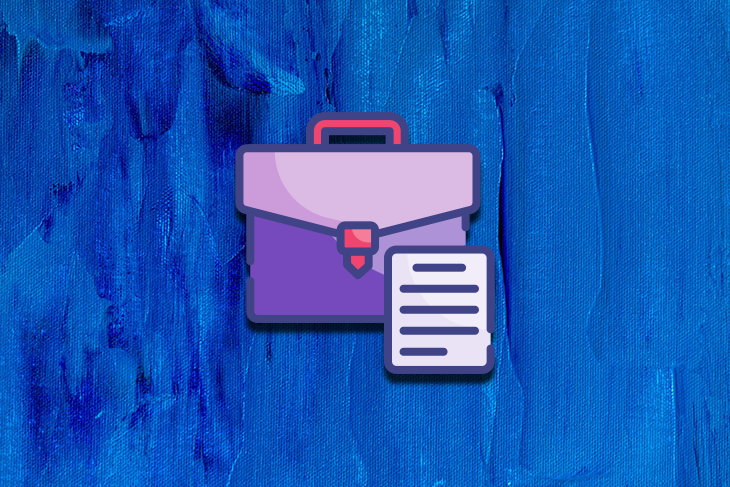After 10 years of continuously working in product management, I decided to leave my full-time job to take a short vacation around a similar time last year. Back then, I wanted to get into freelancing since I liked the idea of working on different products for a shorter period of time. Sometimes that was not possible at my last employer, Zalando, so in the hopes of exploring this new route, I launched a set of side projects.

These projects helped me get a client for whom I am working as a freelance product manager. Interestingly, my association with LogRocket as a freelance writer also happened via one of the side projects.
In this article, we will deep dive into why product managers should have side projects and how they can help with your personal brand.
First and foremost, a side project is highly dependent on the competency of the PM. A PM with a high level of coding skills might be able to create a full-fledged website as a solution to a customer’s problem, while a PM that might not be as proficient with coding might pick up a different solution. In this section, we will explore all different types of side projects a PM can work on:

This probably is the most obvious one but is also a time, resource, and money-consuming option. We need to understand that a website or app is not always a solution. There are multiple other ways by which a customer problem can be solved. Hence, it’s important to understand what the problem is and then implement a solution such as a website or app.
Interestingly, the market is now filled with a lot of no-code/low-code tools that a PM can use to build full-fledged websites without much coding. However, there is a steep learning curve for these platforms. Some highly recommended no-code/low-code tools are bubble.io, Carrd, Webflow, and Zapier.
Lenny Rachitsky left Airbnb in 2019 after serving as a product lead. He wanted to build a startup, but his interest in writing led him to create a newsletter on substack. Now in 2023, he has 472K subscribers.
The growth of his newsletter shows the opportunity that lies in the entire newsletter space. This shows that a website or app doesn’t always need to be a side project. There are a lot of free newsletter platforms that can help you create and run a newsletter in minutes. Some recommended ones are Substack, LinkedIn Newsletter, Mailchimp, and MailerLite.
A couple of years back, I was preparing for a product management interview at Meta. During this phase, I came across Dianna Yau. She has a series of videos on her YouTube channel that helped me learn more about how to approach problems. To date, this is her side project.
Videos are a great way to solve a problem. And on the other hand, they don’t take a lot of time, money, and effort. YouTube, Instagram, and TikTok are the preferred platforms for videos. But it’s good to understand who is your target audience before selecting one platform.
Courses are another great way of earning a little more money as a side project while teaching others what you already know.
Recently got a PM job at a startup? Create a course that helps other PM aspirants how to find a job at a startup. Hired a few PMs in your team? Create a course that helps other hiring managers understand what to look out for while hiring PMs.
Opportunities are endless. You just need an idea that’s worth solving. Kajabi, Gumroad, Udemy, Skillshare, are a few of the notable platforms to create courses.
Another interesting option for a side project is a podcast. If you aren’t into writing, coding, or creating videos, a podcast is a great way to share your thoughts and ideas. One of the interesting reasons why a podcast is an interesting side project is that it requires minimal effort to create one.
On the other hand, users can listen to the podcast even while at work or at the gym. This is different from watching a video or going through a course. Spotify is the preferred platform for podcasts, but there are other smaller ones such as riverside.fm, podbean, etc.
Now that we learned a handful of side projects that PMs can pursue in their free time, let’s deep dive and understand how to start a side project and pick one that makes the most sense for you:
So, you may be asking yourself, “If I have a full-time job, why should I have a side project too?” Great question — let’s talk about why PMs should have a side project:

For anyone who knows what a recession is, also knows the importance of being financially stable. Considering how the market went down last year and is still recovering, it’s important to always have that extra cash for tough times. And side projects help you with that.
I want to highlight though that not all side projects will help you earn money and definitely not a huge amount, but, if done wisely, side projects can surely help you pay your bills.
The job market is competitive. Today, in order to stand out, it’s important to showcase your own personal brand. Truth be told, a strong personal brand evokes confidence and trust. And side projects help you to achieve that.
In the past, there have been cases where I was not able to showcase or work on some of my skills as a product manager since the product I was working on didn’t require those skills. This is where a side project can help. It can help fill in the gaps — especially those related to the skills that you haven’t got an opportunity to work on in your full-time job.
Side projects help you to network with everyone — hiring managers, recruiters, fellow PMs, etc. Networking is the single most effective tool to increase opportunities in any form, be it finding a new job, generating new business opportunities, finding new customers, and more. Side projects help you do that.
I have been a fan of side projects. At the start of the year when I was actively looking for a freelance product management gig, I started a build-in public project to build four micro products in four weeks. I wrote on Medium as well as LinkedIn everyday for 30 days about how I was building these micro products.
The idea was to continue building one of those products after the completion of this side project and make it revenue-generating. But here’s how things played differently. I got in touch with the founder of my current employer via Indiehacker. He was amazed by my project. The interviews went well and I have been happily working with him and the team for the last four months as a freelance product manager.
Along similar lines, Nicole from LogRocket found my writing and reached out to offer me a writing partnership with LogRocket — because of which I am able to write this article. Both of these opportunities knocked at my doorstep simply because I did a side project.
Side projects can definitely enhance the knowledge of a PM. And in most cases will add up to their experience. There are umpteen examples of when PMs left their 9–6 jobs after their side projects took off. So you never know what’s in store!
If there is an idea in your mind, I would highly recommend you bring it to life. Best case, you will be self-sustainable via the project, worst case, you will learn something.
Are you working on a side project? If yes, please comment. I would love to know.
Featured image source: IconScout
LogRocket identifies friction points in the user experience so you can make informed decisions about product and design changes that must happen to hit your goals.
With LogRocket, you can understand the scope of the issues affecting your product and prioritize the changes that need to be made. LogRocket simplifies workflows by allowing Engineering, Product, UX, and Design teams to work from the same data as you, eliminating any confusion about what needs to be done.
Get your teams on the same page — try LogRocket today.

A fractional product manager (FPM) is a part-time, contract-based product manager who works with organizations on a flexible basis.

As a product manager, you express customer needs to your development teams so that you can work together to build the best possible solution.

Karen Letendre talks about how she helps her team advance in their careers via mentorship, upskilling programs, and more.

An IPT isn’t just another team; it’s a strategic approach that breaks down unnecessary communication blockades for open communication.